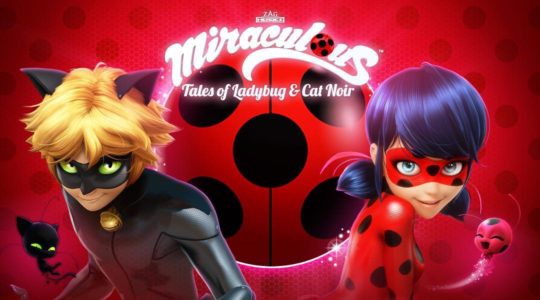I was at the end of fifth grade when the Spider-Man film starring Tobey Maguire premiered in the US. That wasn’t the start of my love for heroism in storytelling: as a preschooler, I pretended to be a fire fighter like my grandfather had been; in third grade, I fell in love with Harry Potter and the Sorcerer’s Stone; later, I obsessed over shows like Cardcaptors and Sailor Moon.
But it was in fifth grade that I was brought into American superhero comic stories, and Tobey Maguire as Peter Parker did it. After watching the movie with friends, I checked out the novelization from my library. I devoured it and watched superhero cartoons – Teen Titans came first, then Static Shock. I ended up secretly writing Teen Titans fan fiction in junior high.
At that age, I probably would have said that I liked these series because they were action stories, but as an adult (especially as an adult who’s lived through the Dark And Gritty DC Movies era) I can now identify something else that drew the younger me to these stories: they’re mainly lighthearted, showing protagonists who are funny and motivated by a desire to help others and be a good person – not by darker motivations like revenge.
The world has felt incredibly dark to me for the past year, and the similarly bleak stories I’ve seen across TV and movies have made me almost reluctant to turn anything on. But I discovered Miraculous about halfway through 2016, and it’s brought me almost endless joy for close on two years.

Miraculous — either Miraculous Ladybug or Miraculous: The Tales of Ladybug and Cat Noir, depending on what version you’re watching – is a French animated kids’ series about a girl named Marinette DuPain-Cheng, a teenager who turns into the magical girl-superhero Ladybug in times of emergency. She has a friend and partner called Chat Noir/Cat Noir who sometimes helps her fight crime and sometimes just sort of gets in the way.
The series, which is available in the US on Netflix, incorporates a lot of themes that interest me in a superhero story. The protagonist is a biracial girl – her father is French and her mother is Chinese – and that’s handled with great care; one episode opens with Marinette’s panic that she’s expected to help her mother’s relative and she speaks no Chinese. (I identify rather personally with this.) Like another popular recent superhero story, Big Hero 6, the cast of the show is multiracial and diverse, though still playing into a couple harmful female character stereotypes when it comes to Marinette’s main antagonist as a normal young girl, the rich and corrupt Chloe, as well as eventual Ladybug antagonist Lila.
But the series doesn’t present a dichotomy of Smart Girl versus Pretty Girl. Ladybug is the most powerful of the two superheroes, though Chat Noir is referred to as her partner, and “in the daytime,” Marinette isn’t a supergenius or even a tomboy: she’s an aspiring fashion designer with a very, VERY pink bedroom.
And she’s not one of only two girls, either. Each episode focuses on a different person whose problems lead them to become an unintentional supervillain, and many of them are Marinette’s classmates. Each boy and girl gets their problem treated with equal respect, and each one of Marinette’s classmates faces a different internal demon: wallflower Juleka, for example, struggles with self-confidence; quiet Nathanael is hurt when his art is ridiculed; competitive, jocky Kim is heartbroken when his crush turns him down in a humiliating way.
Over the course of Season One, Marinette makes a lot of mistakes, but despite her faults, she’s motivated to fight against the supervillains not because she wants revenge, or because she believes that hitting things is the only solution. In the two-part “Origins” episode, we learn that the reason she decided to keep being Ladybug after receiving the powers was her determination to protect the friends she cares about.
The sense of responsibility and the fierce protectiveness Marinette embodies are the qualities that drew me to superhero stories in the first place – not dark, twisting moral quandaries, but the story of a normal person who chooses to be a beacon in the face of darkness.
I’ve watched Season One so many times that I’m surprised Netflix didn’t subtweet me about it, and I’m looking forward to the tentative English release of the second season this spring. In a world that’s felt claustrophobic and dark, the brightness of Miraculous creates a warm glow.
Feliza Casano edits Girls in Capes and writes about science fiction, manga, and other geeky media around the internet. She currently lives in Philadelphia, where she moderates two book clubs and reads potentially too many books. Follow her on Twitter @FelizaCasano and visit her online at felizacasano.com.







